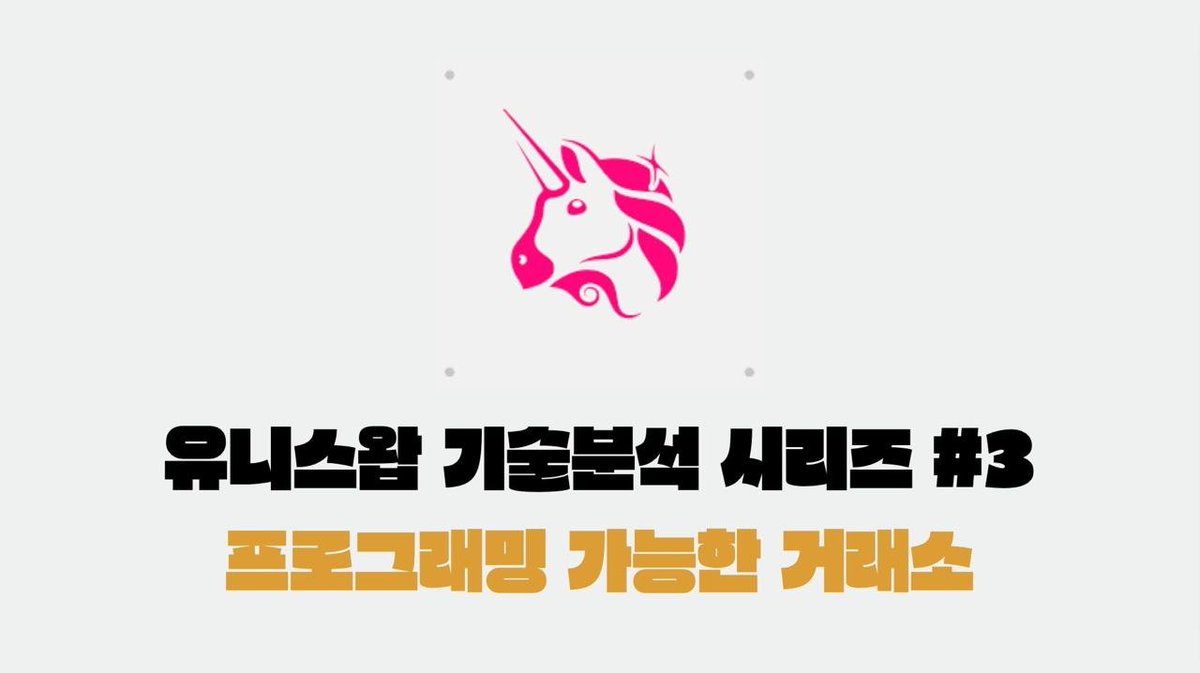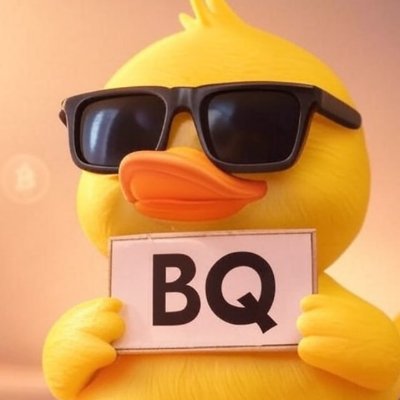🦄 Uniswap Technical Analysis Series #4: Code-Driven Organizations
Hello, I am BQ Developer. @BQ_Developer
So far, we have looked at the technical evolution of Uniswap @Uniswap from V2 to V4, but now the most important question remains.
Who decides the future of this system?
🤔 The reason why perfect technology can be breached
Until September 2020, Uniswap had no tokens.
Hayden Adams and the team made all the decisions, achieving a daily trading volume of $1 billion and growing smoothly.
Then Sushiswap appeared. They simply copied the Uniswap code and added SUSHI token rewards, and in just 5 days, $2.1 billion in liquidity left.
This was the moment the limitations of open source were revealed. The code can be copied by anyone, and liquidity moves instantly if there are better incentives.
⚙️ A makeshift solution: UNI token
Uniswap immediately launched the UNI token.
60% of the 1 billion tokens were allocated to the community, and 400 UNI were airdropped to 250,000 past users. They declared that now token holders would decide everything through voting.
But the reality was different.
🎯 The reality of governance: Apathy and concentration
Four years later, only 20 proposals have been passed.
The average voting rate is 2-3%. Most holders do not participate in voting. They find it difficult to understand complex technical proposals and know that the big players will decide anyway.
In fact, the top 10 addresses hold 45% of the voting power. a16z alone holds 7%.
What’s more interesting is the position of Uniswap Labs. They handle core tasks like V4 development, frontend operations, and regulatory responses... Governance merely stamps the final approval.
💭 The paradox of decentralization
In the end, what the UNI token created was a new form of centralization.
One token, one vote means that capital power equals authority. Complex technical decisions require expertise, but only a few possess both expertise and capital.
The fee switch that has not reached a conclusion for three years is a good example. Whether to share LP profits with some UNI holders seems like a simple issue, but no one can take responsibility and make a decision.
✏️ Concluding the series
From V2 to V4, Uniswap has achieved a technically remarkable evolution.
But the hardest problem was not the technology, but governance.
While the code can be copied, the community cannot be copied.
The real challenge of Web3 is not to create a perfect protocol, but to implement true decentralized governance, don’t you think?
---
Your likes and shares are love 🥰
#BQDeveloper #Uniswap #UNIToken #ParadoxOfDecentralization

🦄 Uniswap Technical Analysis Series #3: Programmable Exchanges
Hello, I am BQ Developer. @BQ_Developer
In the last episode, we discussed how Uniswap V3 sacrificed simplicity for efficiency. This time, I will talk about how Uniswap is facing another fundamental limitation.
🤔 The Paradox of Innovation: Even with new ideas, they cannot be used
The development of Uniswap up to V3 has been remarkable, but one thing has remained unchanged.
Once a protocol is deployed, it cannot be changed.
This is the core value of blockchain: immutability, but it has also become a shackle for innovation.
Let me give you an example. When market volatility is high, if the fee could be automatically adjusted to 0.5%, and to 0.1% when stable, LPs would earn more, and traders could trade at fair prices.
The idea is good, but it is impossible on Uniswap. The fee rate is hardcoded, so no one can change it.
So, can’t we just create a new protocol?
Here lies the cruel reality of DeFi. The Uniswap ETH/USDC pool already has 100 million dollars, but a new protocol has to start from zero. Even trying to swap just 1,000 dollars could cause the price to slip by 5%. Who would use it?
Without traders, LPs won’t come, and without LPs, traders won’t come either. This starts a death spiral.
⚙️ Uniswap V4's Paradigm Shift: Separating Liquidity and Logic
V4 approached this problem from a completely different angle.
"What if we keep the liquidity pool as is, but allow only the trading logic to change?"
The core of the Hook system is this separation. Previously, a single smart contract handled everything from holding funds to executing trades. V4 split this into two.
- Core Protocol: Responsible only for liquidity management
- Hook: Responsible for the detailed logic of the trading process
Now, if there is an idea for dynamic fees, there is no need to create a new protocol. You just need to add a hook to the existing 100 million dollar pool.
The hook can check market conditions before a trade, adjust fees, and execute the trade, all while utilizing the existing liquidity.
💭 New Chaos Created by Infinite Possibilities
V1 was simple, V2 was still simple, and V3 became complex, but the rules were clear.
V4 made the rules themselves programmable.
Now, even the same ETH/USDC trade can be done in dozens of ways. Some hooks defend against MEV, some reduce price impact, and some allow trades only under specific conditions.
In my opinion, the big problem here is how the average user chooses among these options.
Security is the biggest issue. Hooks can execute arbitrary code during the trading process. A malicious hook could sneakily take more tokens or siphon fees to a specific address. However, it is practically impossible for an average person to read and verify smart contract code.
🎯 A New Form of Decentralization
Looking at the situation created by V4 raises an interesting question.
If the protocol is completely open, but in reality, only a few verified hooks are used, is this true decentralization?
Perhaps V4 is experimenting with a new form of decentralization.
Keeping the infrastructure neutral and immutable while leaving the application layer above it to the market's choice. Just like TCP/IP provides a neutral communication protocol, allowing Google or Facebook to compete freely on top of it.
Ultimately, what V4 has shown is the growing pains of DeFi.
From V1 and V2's "simple tools for everyone" to V3's "efficient tools for experts," it has now evolved into a "platform created by developers and chosen by the market."
Like it or not, this may be the way decentralized finance is maturing.
✏️ In the next episode,
Technically, it seems everything has been resolved, but one last question remains. Who will decide the future of all these protocols?
In episode 4, we will look at the new power structure created by the UNI token and governance.
---
Your likes and shares are love 🥰
#BQDeveloper #Uniswap #V4 #Programmability

6.36K
10
The content on this page is provided by third parties. Unless otherwise stated, OKX is not the author of the cited article(s) and does not claim any copyright in the materials. The content is provided for informational purposes only and does not represent the views of OKX. It is not intended to be an endorsement of any kind and should not be considered investment advice or a solicitation to buy or sell digital assets. To the extent generative AI is utilized to provide summaries or other information, such AI generated content may be inaccurate or inconsistent. Please read the linked article for more details and information. OKX is not responsible for content hosted on third party sites. Digital asset holdings, including stablecoins and NFTs, involve a high degree of risk and can fluctuate greatly. You should carefully consider whether trading or holding digital assets is suitable for you in light of your financial condition.

